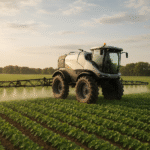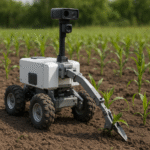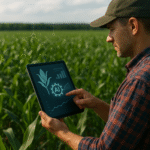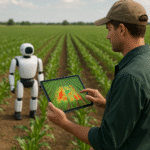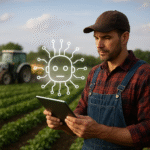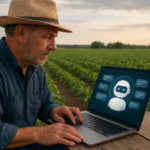Artificial intelligence is revolutionizing the way farmers manage their supply chains, empowering them with unprecedented insights and automation capabilities. By integrating AI-powered tools, **impressive** agricultural operations can achieve greater **efficiency**, reduce waste, and anticipate market fluctuations. As global demand for high-quality produce continues to rise, leveraging intelligent systems becomes essential to foster **sustainability** and build **resilient** food networks.
Embracing AI-driven Predictive Analytics
Predictive analytics harnesses the power of **machine learning** algorithms to analyze historical data, weather patterns, and real-time field conditions. This section explores how farmers can transform raw information into actionable strategies, ensuring optimal production and supply alignment.
Demand Forecasting and Market Alignment
Accurate demand forecasting enables producers to plan planting schedules, manage inventory, and negotiate favorable contracts. By evaluating sales trends, regional consumption data, and macroeconomic indicators, AI systems can predict market needs with remarkable precision. Farmers can then:
- Adjust crop varieties to meet emerging consumer preferences
- Optimize harvest timing to match peak demand windows
- Reduce overproduction and associated storage costs
Risk Mitigation through Early Warning
Natural disasters, pest infestations, and supply disruptions pose significant threats to agricultural supply chains. AI-driven predictive models continuously monitor risk factors, including climate anomalies and disease outbreaks. When potential hazards are detected, these systems trigger alerts, allowing farmers to implement **preventive** measures, such as deploying targeted treatments or reallocating resources to safeguard yields.
Enhancing Efficiency through Real-time Monitoring and Automation
Modern farms are increasingly adopting Internet of Things (IoT) devices, drones, and autonomous machinery to capture detailed insights on crop health, soil moisture, and environmental variables. Coupled with AI, these technologies enable a level of **precision** farming once thought impossible.
Connected Sensor Networks
IoT sensors distributed across fields collect continuous data streams on soil nutrient levels, temperature fluctuations, and irrigation status. AI platforms analyze this influx of information, generating irrigation schedules and fertilizer applications tailored to each plot’s unique conditions. The outcome is:
- Water conservation through targeted watering
- Reduced chemical usage via precise nutrient delivery
- Minimized environmental impact and operational costs
Autonomous Machinery and Robotics
From self-driving tractors to robotic harvesters, automation powered by AI vision systems accelerates manual tasks and enhances consistency. Robots equipped with computer vision can identify ripe fruits, remove weeds, and perform planting with millimeter accuracy. These advances yield:
- Accelerated field operations and reduced labor reliance
- Improved crop quality by minimizing human error
- Lower long-term operational expenditures
Building Resilient and Traceable Supply Chains
Transparency and traceability are pivotal to fostering consumer trust and complying with stringent food safety regulations. By integrating **blockchain** technology with AI analytics, farmers can achieve seamless end-to-end visibility across their supply networks.
Digital Ledger Integration
Blockchain creates immutable records of every transaction, from seed sourcing to retail delivery. When combined with AI, this digital ledger can be enriched with predictive insights, such as:
- Optimal routing suggestions for perishable goods
- Real-time quality assurance based on sensor data
- Early detection of supply chain bottlenecks
Collaborative Platforms for Stakeholder Engagement
AI-driven marketplaces and collaborative platforms connect farmers with distributors, processors, and retailers. Through intelligent matchmaking algorithms, participants can align supply with evolving demand patterns, negotiate terms transparently, and share risk metrics. This level of **collaboration** strengthens community resilience and fosters equitable growth across the agricultural ecosystem.
Leveraging Data for Continuous Improvement
Data is the fuel that powers AI’s transformative potential. By systematically collecting, aggregating, and analyzing field and supply chain metrics, farmers can continuously refine their practices and drive long-term gains.
Performance Dashboards and KPI Tracking
Interactive dashboards present key performance indicators, such as yield per hectare, transportation lead times, and energy consumption. AI models can identify performance deviations and recommend corrective actions, ensuring that supply chain processes stay on track.
Adaptive Learning for Evolving Conditions
AI systems excel at adapting to new information. Whether adjusting for shifting climate patterns or changing market demands, these platforms learn from every data point, perpetually enhancing their predictive accuracy. The result is a **dynamic**, future-ready supply chain capable of withstanding uncertainties.
Conclusion of Cutting-Edge Strategies
Adoption of AI in supply chain optimization marks a pivotal step toward an **impressive** agricultural future. By combining predictive analytics, real-time monitoring, and traceable networks, farmers can achieve unparalleled levels of **optimization**, **resilience**, and **sustainability**. The continuous evolution of intelligent tools promises to redefine farming practices worldwide, securing food systems and empowering stakeholders across the value chain.
